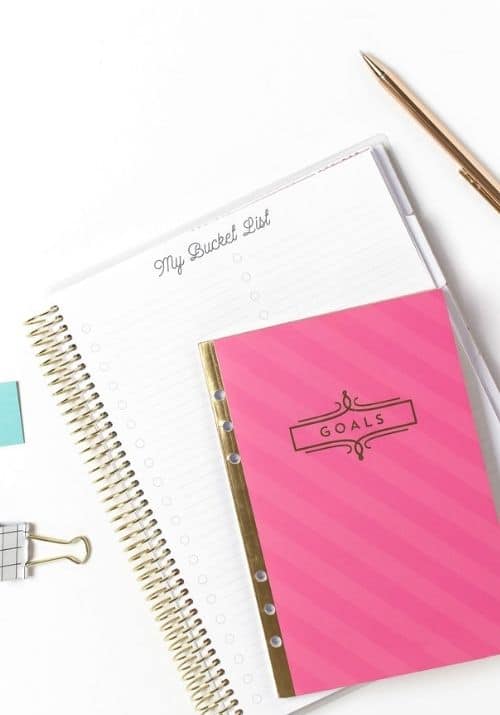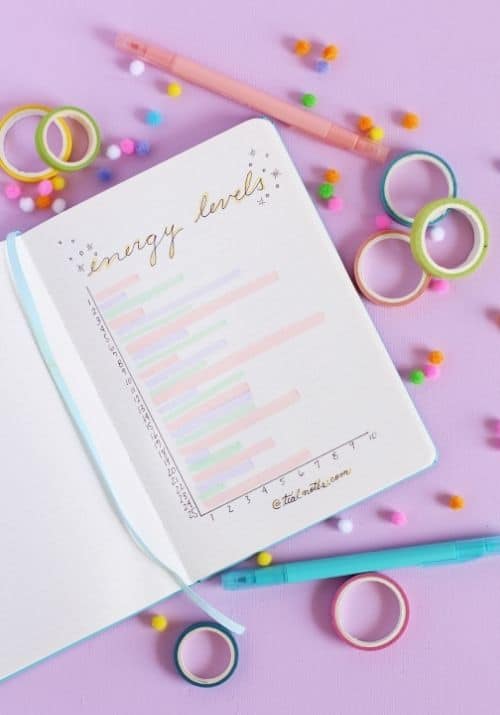Learning from Failure: What to Do Next with Failed Goals
We have all been there.
We set a goal, we work hard towards it, and then… we fail.
It can be incredibly frustrating, and it’s easy to feel like you’re not good enough or that you’ll never achieve your goals. But don’t worry, failure is part of the learning process!
In this blog post, we will discuss what to do next after failed goals so that you can learn from your mistakes and move on stronger than ever before!
Learning from Failure: What to Do Next with Failed Goals
No one wants to talk about a failed goal, but – it happens. A lot.
I get it. It’s hard to admit that you didn’t do as well as you thought you would, or worse, feeling like you did everything right but didn’t get the results you were looking for.
But seeing failure as – well, as failure – is missing out on a great learning experience. Failure isn’t an enemy, sent to weaken us; failure is an opportunity.
Someone once told me that no one is as under-prepared to run a business as someone who’s never had one fail before. If you’ve succeeded at everything you’ve ever touched… well, congratulations, but you might be missing some VERY important lessons.
Failure to reach a goal can teach us a lot – about ourselves, about our goal setting processes, and about hard work. It can also teach us about healthy expectations.
Just like you didn’t fully understand the value of money until you started to work – you don’t understand the value of success until you’ve failed.

So, how do you learn from a failed goal?
[cboxarea id=”cbox-F7CUBIpvMpO5iwiT”]
Step 1: Identify what went wrong
A goal can fail for many reasons, but most of them can be boiled down to fit into one of three categories:
- It’s the goal’s fault
- It’s your fault
- No fault here
Let’s look at these.
1. It’s the goal’s fault.
Obviously, a goal is an abstract concept – I’m not saying that literally the goal sabotaged you. What I mean is, something is off in the goal setting process you’re using.
In SMART goal setting, the aim is to make sure that any goal you set meets the following criteria:
It must be:
a) Specific, so you know exactly what you’re aiming for.
b) Measurable, so you’ll know when you’ve hit it.
c) Attainable, so you’re not setting impossible goals.
d) Realistic, so you know it can be set in the timeframe provided.
e) Timely, so you know how much time you have to hit it.
Some common reasons for a goal to fail are included in the SMART framework. It’s possible you didn’t give yourself enough time to achieve the goal – losing 20 pounds is a common goal, but doing it in a month or two is… well, not realistic.
Or maybe the problem didn’t have to do with SMART goal setting, but with the quality of the goal itself.
If you set a goal to hit $5k months in your business, that’s a fantastic goal! But what was your plan to get there?
If you said, “I’m going to keep working hard and putting great stuff out there,” that’s not wrong. But you left the actualization of that goal up to chance. Sales goals can be crucial to business, but they only work if you understand what it is that is making you money and how you can scale it.
That $5k goal becomes a lot more manageable (and less reliant on luck) when you can break it down like this:
My ad revenue is currently sitting at $x.xx, and my traffic averages #Y per month. If I can get my traffic up to #Z, I can hit $5k on ad revenue alone.
When you look at it that way, your goal isn’t actually “Have $5k months by November”, unless you can physically reach into people’s pockets and pull out your own paycheck.
Your ACTUAL goal was something closer to “Raise my traffic by X amount by November to take advantage of my great RPM”.
2. It’s Your Fault
This sounds harsh, I know. But when a failed goal is “your” fault, it means one of these following things:
- You didn’t do the work that the goal required
- You underestimated the work that the goal required
Taking responsibility for your actions is a crucial step here. If you didn’t meet your goal because you simply didn’t put the work in – own it. Don’t beat yourself up over it, but own it.

We can’t all be perfect all the time. Go over what happened and ask yourself WHY it didn’t get done. Maybe you got sick and had to take on a reduced workload, or other life circumstances kept you away.
Alternately, maybe the amount of work seemed reasonable when you set your goal, but once you were in the thick of it, it was too much to keep up with.
Sometimes we get caught up in the excitement of a new goal – and don’t realize that we can’t do EVERYTHING all at once.
If you didn’t meet your goal as planned and it’s because the work didn’t get done, carefully consider why.
It’s very possible that you need to lower your expectations.
It’s also possible that you may need to carve out more time to work towards your goals.
Some people struggle with saying no to friends and family, or otherwise prioritizing time for themselves, to work on their own things. Or sometimes it could be that you didn’t have as solid of a plan as you thought, so you wasted time spinning your wheels trying to decide what to even do next (I’m guilty of this).
Really dive deep into what happened – remember, don’t be hard on yourself but be honest.
Take what you now know went wrong into account, and formulate a new plan.
If you need to give yourself extra time this go around, do that.
If you need to make a time commitment for yourself, add that in. Make contingency plans to keep yourself on track if something comes up.
Most importantly, remember to work in time for catching up or taking some “me time” – if your whole plan only works if no emergencies happen, then your timeframe is too strict!
Related: Successful Brainstorming to Help You Achieve Your Goals
3. It’s No One’s Fault
This third category is maybe the most important one. Sometimes when goals don’t get met it can be a good thing.
It’s okay for your priorities to change. If you started on a specific path then realized it wasn’t the right fit for you and you needed to pivot – it’s important that you give yourself the grace to do so.
Life is too short to waste it chasing someone else’s dreams.
I’ve started a business, set hefty goals, and threw my entire self into it – only to realize at a crucial moment that it wasn’t right for me at all.
In this case, I didn’t just lose a goal, I lost time and money (a good chunk of it too).
Even worse, I lost a little bit of my self respect – I took what I initially saw as a failure pretty hard.
I felt like I had let my family down, and I felt embarrassed when people asked me how it was going and I had to admit I’d pumped the brakes altogether.
It took me a little while to bounce back.

Now, I’m in a place where I can take what I learned about running that business, and apply it to my current business.
More importantly, I know what went wrong and how to avoid that pitfall the next time – and I no longer beat myself up over shutting it down.
If I hadn’t stopped when I did, I wouldn’t have found what I’m doing today. It was a lot of fun, and now when people ask me about it, I can tell them that it just wasn’t right for me and not feel embarrassed.
It hit my self-image because I had built this image of myself as a businesswoman in a specific industry and leaned into it hard – but that wasn’t a good fit for who I actually was anyway.
Now instead, I have an image of myself as a person who’s not afraid to try and fail and try again. That one fits much better.
Sometimes a failed goal is a sign that the path you’re going in isn’t right for you.
Have you ever looked back on a relationship and realized you weren’t actually in love with that specific person, but rather the idea of them you had in your mind?
That phenomenon isn’t limited to romantic partners. Humans are silly creatures and we’re prone to building something up in our heads that isn’t at all what we think it is.
When a goal fails, the first question you need to ask yourself is whether or not it was what you really wanted in the first place.
Step 2: Make a New Plan
By now, you’ve probably got a pretty good idea of why your goal didn’t go as planned. Now you need to figure out what to do about it.
Believe it or not, that previous step was the hard one – once you’ve got that done, this one is a piece of cake.
(Being honest with yourself? Taking responsibility for your actions? Avoiding the trap of being too hard on yourself while still owning your stuff? Analyzing your own behavior and motivations?! You deserve a reward after all that!)
Keeping in mind why you didn’t reach your goal last time, tweak it.
Did you not give yourself enough time? Add more time or pare down your expectations.
If you need to make accommodations or re-arrange your schedule, now is the time to do that.
In a lot of cases, all you really need to do is adjust your expectations. When we start out on any new journey, we tend to gravitate towards success stories – and the more extreme stories get the most attention.
That doesn’t mean those results are typical, and it doesn’t mean they’re realistic goals to set for yourself.
Yes, some other person was able to drop 25 pounds in one month, or took a business to five figures a week in their first quarter.
Maybe they got really lucky, and maybe they’re stretching the truth.

Should you let yourself be inspired by these stories and use them to motivate yourself to work on your goals?
Absolutely!
But don’t compare yourself to someone with fantastical results and wonder why you’re not getting the same.
The most important part here is that you revise the goal, then get back to it.
So many times, we fail at something on the first try, only to never try again. We let a failed goal become, and stay, a failed goal – permanently.
The result?
We never achieve what we want, and we tell ourselves that it’s just not meant for us – when in reality, we didn’t really try.
Do not let that be you!
Learning from Failure: What to Do Next with Failed Goals
Real life is messy. Most things don’t go right on the first try. It often takes more than one try to get something just right.
This is YOUR life, and you get to design it how you want it. It’s up to you to take a failed goal and learn from it – and get stronger in the process.
Looking for some more info on goal setting?
Check out these posts:
- The Exciting Benefits You Can Expect From Goal Setting
- Why is it Important to Set Realistic Goals?
- Why is Setting Goals Important?
- The Secrets of People Who Always Hit Their Goals
and our quick course on confidence!
Save this post on Pinterest:










